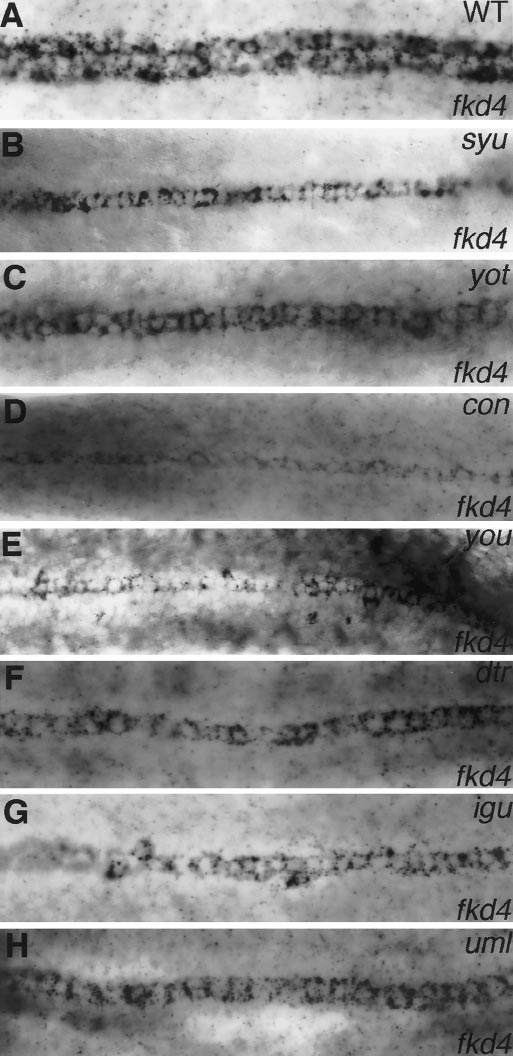Fig. 5 Members of the shh signal transduction cascade are involved in the induction of LFP cells. Dorsal views (anterior is left) of wild-type (A) and syutd4 (B), yotty119 (C), contf18b> (D), youty97 (E), dtrts269 (F), iguts294e (G), and umlty254z (H) mutant embryos in the pharyngula period hybridized with a probe specific for fkd4. In the ventral neural tube of the trunk region fkd4 is expressed in a three- to four-cell-broad domain including the MFP and the LFP cells. Members of the shh signal transduction cascade necessary for the induction of adaxial cells and muscle pioneer cells in the somites, syu, yot, con, and you, are also involved in the induction of LFP cells, while MFP development in these mutants appears normal. Further components of the shh signal transduction cascade are dtr (F), igu (G), and uml (H), which, similar to the you-type mutants, have defects in the projection of retinal axons, a curled-down body axis, and defects in LFP cells. While in dtr and uml embryos fkd4 staining is restricted to the MFP (F, H), in igu embryos a few fkd4-expressing cells can also be detected lateral to the MFP (G).
Reprinted from Developmental Biology, 219(2), Odenthal, J., van Eeden, F.J., Haffter, P., Ingham, P.W., and Nüsslein-Volhard, C., Two distinct cell populations in the floor plate of the zebrafish are induced by different pathways, 350-363, Copyright (2000) with permission from Elsevier. Full text @ Dev. Biol.

